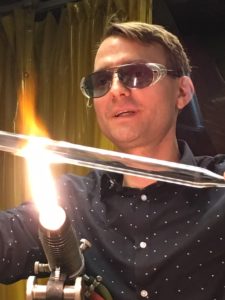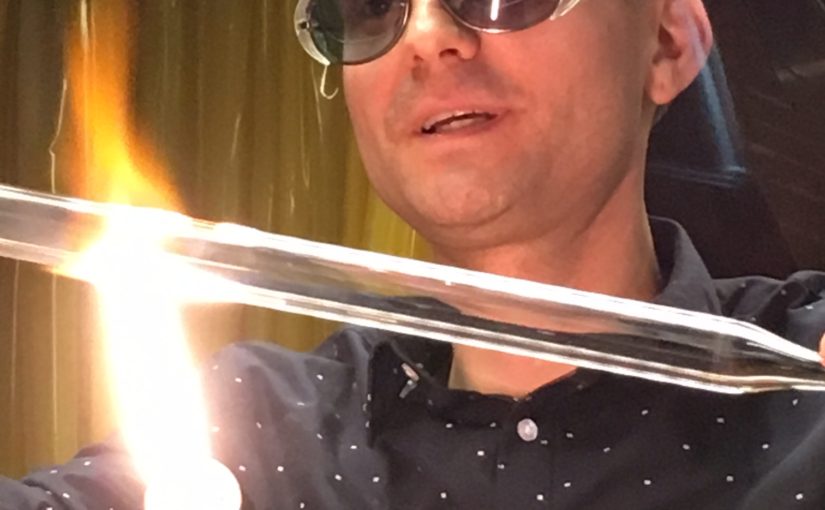
When you first meet him, Aaron Kirchhoff seems more like a science nerd than an artist. In fact, Kirchhoff is a mixture of both. As a professor of sculpture in North Dakota State’s Visual Arts Department, he specializes in the extremely delicate art of glass blowing. As a scientific glass blower, he uses very specific physical and chemical properties of glass to create his intricate structures.
Scientific glass blowing differs from traditional glass blowing in that a scientific glass blower may use an oxygen, nitrogen or propane flame to heat the glass. For his demonstration Nov. 1, Kirchhoff used a propane-assisted oxygen flame. This flame was similar to the flame used to create the pieces he showcased at part of the Memorial Union Gallery’s Faculty Exhibition.
The professor used a variety of glass rods and tubes for his demonstration, in different thicknesses. He started by describing how a glass blower must evenly and gradually heat the glass or it will crack, because the material will unevenly expand. Kirchhoff also uses a special grip technique when he is heating the glass to help determine when the glass is just the right temperature to pull out of the fire, usually somewhere are 1100 degrees Fahrenheit.
At one point, he pulled the piece out of the flame and purposely stopped rotating the tube. The molten middle instantly started to sag, so he put it back in the flame and began spinning it again to correct it. Kirchhoff explained to keep the molten part “on axis,” or aligned with the center of the non-molten portion of the tube. He gently turns the glass in his hands when he heats it.
Once Kirchhoff had a piece of glass molten enough, he demonstrated several techniques of shaping the glass, such as bending it into different shapes, blowing into the tubes and manipulating the molten portions using a graphite tool. He explained the hot glass doesn’t stick to high-quality graphite like it does steel, and he can use the different shaped tools to form the glass, giving it a flared opening or a flat bottom.
For one of the pieces, he used a U-bend technique, and then heated one specific portion of the tube to create an opening. Taking another rod, Kirchhoff used it to make a “bridge” to brace the first piece, while he heated it again to join it with another piece.
Kirchhoff really showed a passion for his work during the demonstration. He genuinely appreciated anyone’s interest, including the little boy in the front who constantly had something to say. Overall, it was a good time, and could have gone on for hours more. I think you could even say it was mind-blowing.
